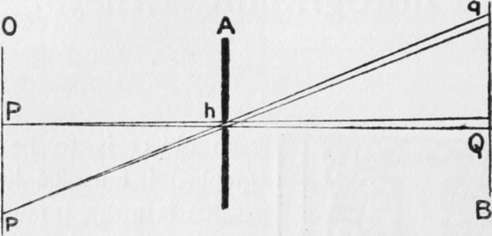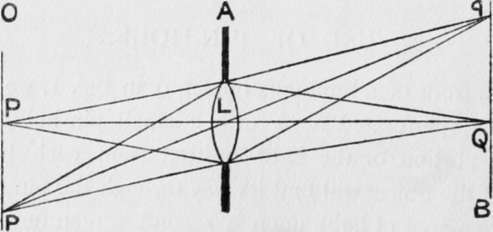Action Of The Lens
Description
This section is from the book "The Barnet Book Of Photography", by Herts Barnet. Also available from Amazon: The Barnet Book Of Photography.
Action Of The Lens
With a good lens both defects of the pin-hole are remedied. It transmits a very much larger amount of light, and, if properly " corrected," it will produce a finely defined and accurately drawn image of the most intricate detail. Fig. 2 is similar to Fig. 1, but shows a lens, l, in place of the pin-hole. It is, however, only an emblematic lens, and not illustrative of the form of a photographic lens, which is a much more complex arrangement. It is easily seen that the lens must transmit more light than the pin-hole, being of larger area, but it is also obvious that to act perfectly it must concentrate all the light that it collects from any one object point on to the corresponding image point, or " focus," and at the same time must correctly locate all the numerous foci that make up the complete image. These conditions are essential to the formation of a well defined and correctly drawn image, but they are not fulfilled unless the lens is especially constructed, or " corrected," for the purpose.
The light received by the lens from any object point is of necessity always divergent, as shown in the diagram, and forms a divergent "pencil" of light, though when the object is at a very great distance the divergency is so small that the pencil may practically be called parallel. The photographic lens, whether a single lens or a combination of lenses, must have the power of converting such a divergent or parallel pencil into a convergent one, otherwise it can form no real focus of the object point; therefore the lens must be of the class known as convergent or " positive " lenses. A combination of lenses that is positive as a whole may, however, include one or more " negative " or divergent lenses, which, used alone, cause parallel pencils to diverge and render divergent pencils still more divergent. Single lenses of the two classes can be distinguished apart from their effects, a positive lens always being thicker in the centre than at the edges, and having at least one convex surface, while a negative lens is thinnest in the centre, and always has at least one concave surface.

Fig. 1.

Fig. 2.
Continue to:
Tags
paper, print, negative, exposure, lens, development, camera, focus
